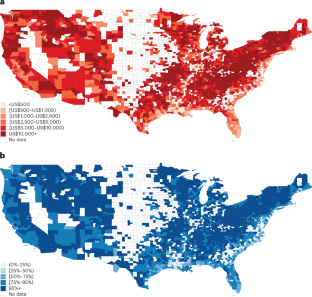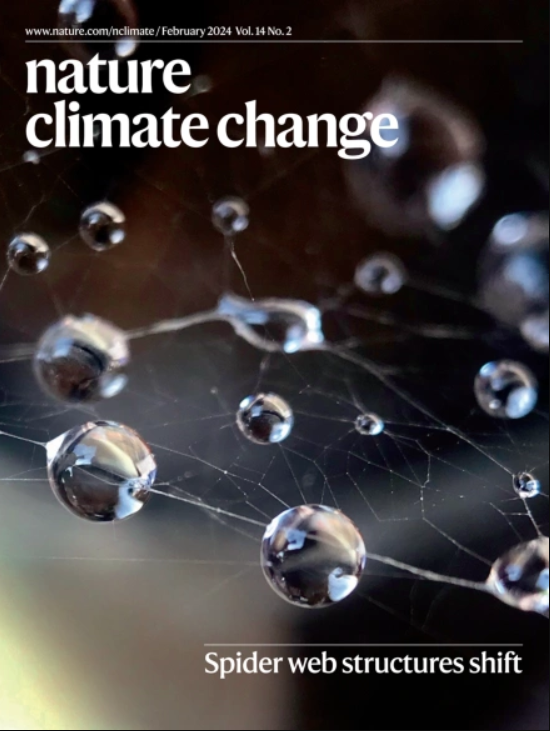Measuring flood underinsurance in the USA
IF 27.1
1区 地球科学
Q1 ENVIRONMENTAL SCIENCES
引用次数: 0
Abstract
Flood insurance could mitigate the negative shock from climate-induced disasters, yet many households are still not covered. Here, using data on expected flood damage and National Flood Insurance Program policies, we provide estimates of annual flood risk protection gaps and underinsurance among single-family residences in the contiguous USA. Annually, 70% (US$17.1 billion) of total flood losses would be uninsured. Underinsurance, defined as protection gaps among properties whose current coverage is under the optimal level, totals US$15.7 billion annually. Among at-risk households, 88% are underinsured and average underinsurance is US$7,208 per year. Underinsurance persists both inside and outside the Federal Emergency Management Agency’s special flood hazard areas, suggesting frictions in the provision of risk information and regulatory compliance. Underinsurance falls disproportionately on low-income communities. At least 70% of at-risk households would benefit from purchasing flood insurance, even as prevailing prices rise. Homeowners could benefit from flood insurance to offset the negative impacts of climate-induced natural disasters. However, with detailed micro-level data, researchers find substantial protection gaps and underinsurance across the USA that disproportionately affect low-income households.


测量美国洪水保险不足
洪水保险可以减轻气候灾害带来的负面冲击,但许多家庭仍未投保。在这里,我们使用预期洪水损失和国家洪水保险计划政策的数据,对美国连续的单户住宅的年度洪水风险保护缺口和保险不足进行了估计。每年,总洪水损失的70%(171亿美元)将没有保险。保险不足的定义是当前覆盖率低于最佳水平的财产之间的保护缺口,每年总计达157亿美元。在风险家庭中,88%的人保险不足,平均每年保险不足7208美元。在联邦紧急事务管理局(Federal Emergency Management Agency)的特别洪水危险区内外,保险不足依然存在,这表明在提供风险信息和遵守监管规定方面存在摩擦。保险不足不成比例地落在低收入社区。即使洪水价格上涨,至少70%的高风险家庭将从购买洪水保险中受益。
本文章由计算机程序翻译,如有差异,请以英文原文为准。
求助全文
约1分钟内获得全文
求助全文
来源期刊

Nature Climate Change
ENVIRONMENTAL SCIENCES-METEOROLOGY & ATMOSPHERIC SCIENCES
CiteScore
40.30
自引率
1.60%
发文量
267
审稿时长
4-8 weeks
期刊介绍:
Nature Climate Change is dedicated to addressing the scientific challenge of understanding Earth's changing climate and its societal implications. As a monthly journal, it publishes significant and cutting-edge research on the nature, causes, and impacts of global climate change, as well as its implications for the economy, policy, and the world at large.
The journal publishes original research spanning the natural and social sciences, synthesizing interdisciplinary research to provide a comprehensive understanding of climate change. It upholds the high standards set by all Nature-branded journals, ensuring top-tier original research through a fair and rigorous review process, broad readership access, high standards of copy editing and production, rapid publication, and independence from academic societies and other vested interests.
Nature Climate Change serves as a platform for discussion among experts, publishing opinion, analysis, and review articles. It also features Research Highlights to highlight important developments in the field and original reporting from renowned science journalists in the form of feature articles.
Topics covered in the journal include adaptation, atmospheric science, ecology, economics, energy, impacts and vulnerability, mitigation, oceanography, policy, sociology, and sustainability, among others.
 求助内容:
求助内容: 应助结果提醒方式:
应助结果提醒方式:


